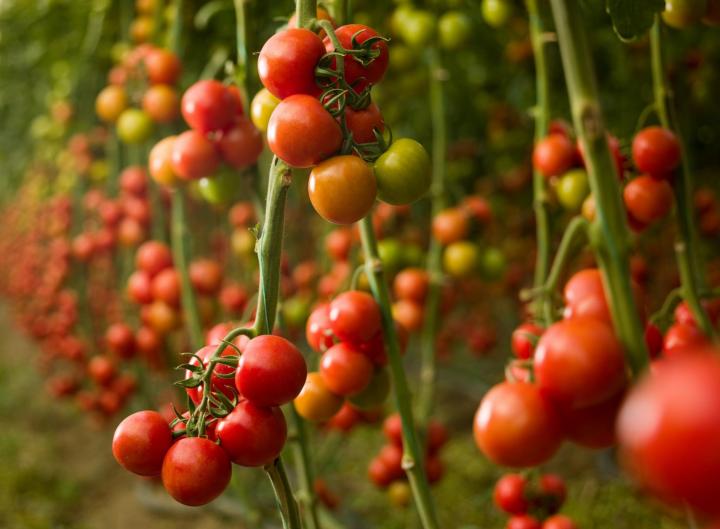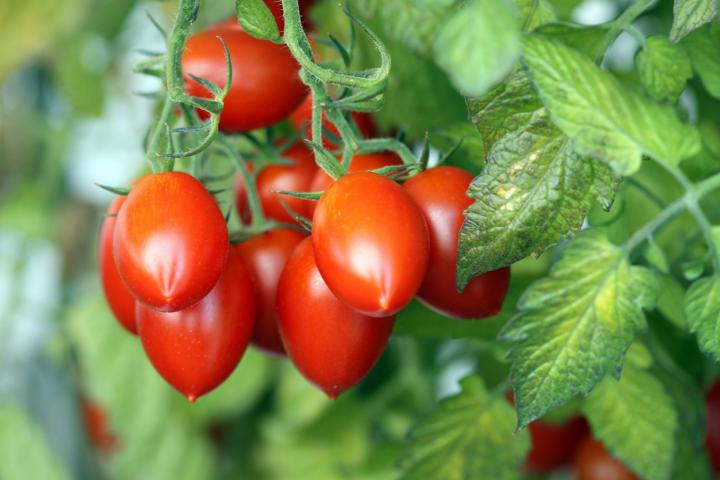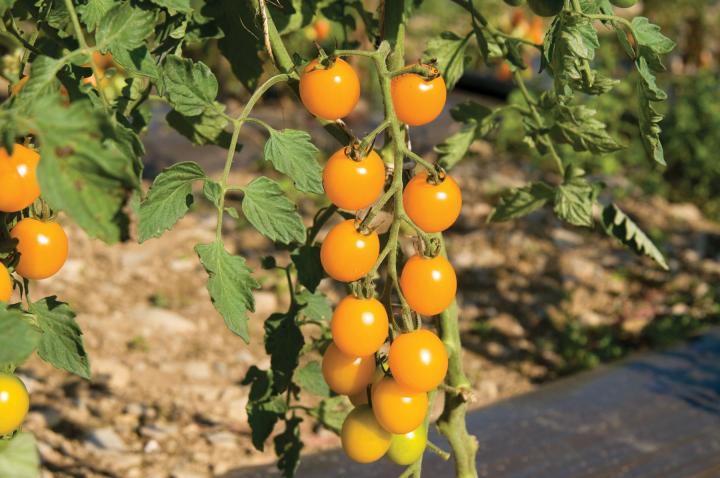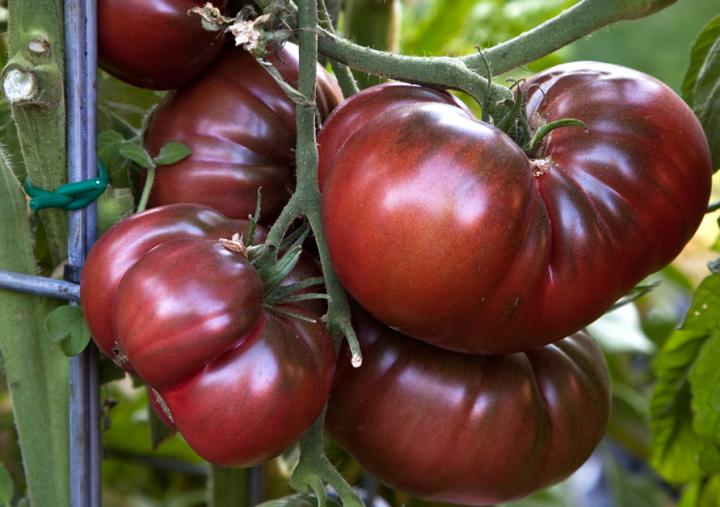Choose a location with ample sunlight! In the north, 8 to 10 hours of direct sunlight are best. In the south, consider light afternoon shade . Excavate the soil to a depth of approximately 1 foot and incorporate aged manure and/or compost. Allow a two-week period for decomposition prior to planting.
Also, choose a space where tomatoes (and members of their family, especially eggplants, peppers, and potatoes) have not grown in the previous couple of years. See tips on crop rotation.
When to Plant Tomatoes
Tomatoes are long-season, heat-loving plants that won’t tolerate frost, so wait until the weather has warmed up in the spring.
If you are starting tomatoes from seed, sow indoors six weeks before the last expected spring frost date in your area. Sow seeds 1/2-inch deep in small trays. Plant seedlings outdoors about two weeks after that date or when temperatures stay in the mid-50 degree range both day and night.
If you have a long enough growing season, it is also possible to direct-seed tomatoes in the garden soil (1/2-inch deep)—but not before the soil is at least 55°F. Note that 70°F soil is optimum for maximum germination within five days. Ensure to monitor the soil temperature closely to achieve the best results for germination.
Hardening Off Tomatoes
When purchasing or cultivating starting plants, it is necessary to 'harden off' the seedlings for a week prior to transplanting them into the ground. Set them outdoors in the shade for a few hours on the first day. Gradually increase this time each day to include some direct sunlight.Discover the Best Techniques for Hardening Off Seedlings.
How to Plant Tomatoes
- Transplant your seedlings (or your nursery-grown plants) into the ground outdoors after all danger of frost has passed and the soil is at least 60°F. See our Planting Calendar for suggested transplanting dates.
- Place tomato stakes or cages in the soil when planting. Staking and caging keep developing fruit off the ground (to avoid disease and pests) and also help the plant to stay upright.
- Optional: When you transplant tomatoes, add a handful of organic tomato fertilizer or bone meal (a good source of phosphorus) to the planting hole. Do NOT apply high-nitrogen fertilizers such as those recommended for lawns, as this will promote luxurious foliage but can delay flowering and fruiting.
- When planting seedlings, pinch off a few of the lower leaves. Here are two ways to set seedlings in the soil:
- Place each root ball deep enough so that the bottom leaves are just above the surface of the soil. Roots will grow all along the plant’s stem underground. Plant seedlings 2 to 3 feet apart. Crowded plants will not get sufficient sun, and the fruit may not ripen.
- Alternatively, lay long, leggy transplants on their sides in trenches 3 to 4 inches deep. Bury the stems up to the first set of true leaves. Roots will develop along the buried stem. If you plant this way, consider setting four tomato plants in compass-point positions (north, south, east, and west). This formation enables you to fertilize and water the plants in the middle.
- Remember to allow enough space for the plants to spread out.
- Water well to reduce shock to the roots.
Growing Tomatoes in Containers
- Use a large pot or container (at least 20 inches in diameter) with drainage holes in the bottom.
- Use loose, well-draining soil (e.g., at least 12 inches of a good “potting mix” with added organic material).
- A tray of some sort should be placed under the pot to catch any excess water that drains out the bottom.
- Choose determinate types, such as bush or dwarf varieties. Many cherry tomatoes grow well in pots. Taller varieties may need to be staked.
- Plant one tomato plant per pot and give each at least 6 hours of sun per day.
- Keep soil moist. Containers will dry out more quickly than garden soil, so check daily and provide extra water during heat waves.
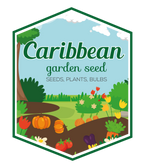
![[Seeds] - Caribbeangardenseed](http://caribbeangardenseed.com/cdn/shop/files/gift-card-gift-card-1_1024x1024_dfa857db-9150-4315-a362-7f0bb3fb9c47_60x28.png?v=1722895789)

